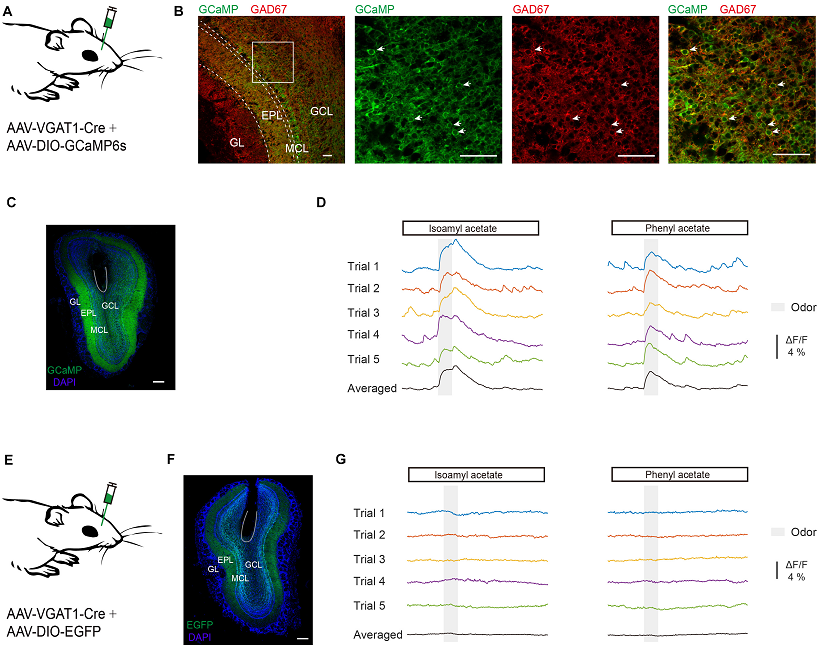AAV-GCaMP6s was used to monitor neuronal activity of GCs. (From
BrainVTA)
The viruses used in this article from BrainVTA are in the table below
|
Calcium sensors |
PT-0071 AAV-DIO-GCaMP6s-WPRE-hGH polyA |
|
CRE Recombinase |
PT-0346 AAV-VGAT1-Cre-WPRE-hGH polyA |
|
Control |
AAV-DIO-EGFP-WPRE-hGH polyA |
Dejuan Wang, Yang Chen, Yiling Chen, Xiaowen Li, Penglai Liu, Zhaoyang Yin, Anan Li
Pub Date: 2020-09-14,
DOI: 10.3389/fncel.2020.579349,
Email: sales@brainvta.com
In the olfactory bulb, olfactory information is translated into ensemble representations by mitral/tufted cells, and these representations change dynamically in a context-dependent manner. In particular, odor representations in mitral/tufted cells display pattern separation during odor discrimination learning. Although granule cells provide major inhibitory input to mitral/tufted cells and play an important role in pattern separation and olfactory learning, the dynamics of odor responses in granule cells during odor discrimination learning remain largely unknown. Here, we studied odor responses in granule cells of the olfactory bulb using fiber photometry recordings in awake behaving mice. We found that odors evoked reliable, excitatory responses in the granule cell population. Intriguingly, during odor discrimination learning, odor responses in granule cells exhibited improved separation and contained information about odor value. In conclusion, we show that granule cells in the olfactory bulb display learning-related plasticity, suggesting that they may mediate pattern separation in mitral/tufted cells.

Figure 1. Odor-evoked responses are recorded in GCs of the OB.
This study is aimed to explore the dynamics of odor responses in granule cells during odor discrimination learning. Using fiber photometry, the authors characterized the activity of the GCs population in awake behaving mice engaged in an odor discrimination task. In conclusion, they show that granule cells in the olfactory bulb display learning-related plasticity, suggesting that they may mediate pattern separation in mitral/tufted cells.
BrainVTA offers viral vector construction & virus packaging services for AAV, LV, RABV, PRV, HSV and VSV that help researchers explore questions about genes, neurons, circuitry structure, function of brain network, mechanism and treatment of diseases.
If you have any needs, just email us at sales@brainvta.com.
